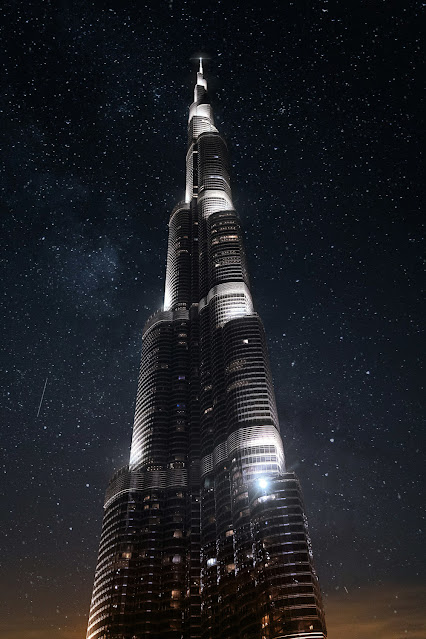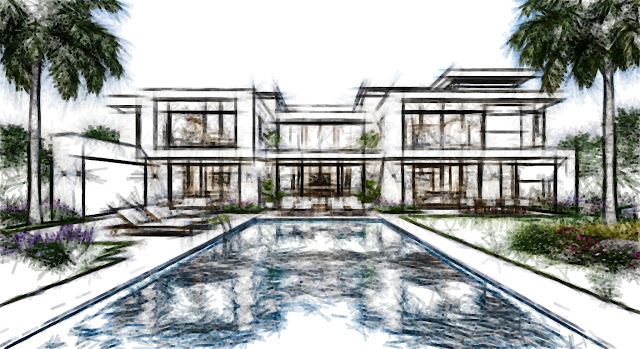The Evolution of Skyscrapers: From the Eiffel Tower to the Burj Khalifa
Skyscrapers are among humanity’s boldest architectural statements. Reaching toward the heavens, these towering structures reflect not only technological innovation but also the ambitions, identities, and dreams of civilizations. From the wrought-iron elegance of the Eiffel Tower to the shimmering heights of the Burj Khalifa, the evolution of skyscrapers is a story of progress, design revolutions, and changing urban landscapes.
The Birth of a Vertical Ambition
The Eiffel Tower: A Symbolic Starting Point (1889)
Though not a skyscraper in the traditional sense—being a lattice tower rather than a habitable building—the Eiffel Tower in Paris marked a pivotal moment in vertical construction. Designed by Gustave Eiffel for the 1889 World’s Fair, it stood at 300 meters (984 feet), dwarfing any other man-made structure at the time.
While initially criticized for its stark industrial design, the tower became a global symbol of innovation. Its success demonstrated that it was possible—and desirable—to build up rather than out.
The Rise of the True Skyscraper
Early 20th Century: The American Ascent
In the early 1900s, the skyscraper took shape in the United States, particularly in Chicago and New York City. Steel-frame construction and elevator technology allowed buildings to soar to unprecedented heights.
-
Flatiron Building (1902) – A New York icon and early example of the steel skeleton structure.
-
Woolworth Building (1913) – At 241 meters, it was dubbed the "Cathedral of Commerce."
-
Chrysler Building (1930) – An Art Deco masterpiece, briefly the tallest building in the world.
-
Empire State Building (1931) – Reaching 381 meters, it symbolized American might during the Great Depression.
These buildings reflected both an architectural flourish and a race for economic and symbolic supremacy.
Mid-Century Modernism and Functionality
By the 1950s and '60s, the emphasis shifted toward minimalist, International Style towers focused on efficiency and functionality.
-
Seagram Building (1958, NYC) – A collaboration between Ludwig Mies van der Rohe and Philip Johnson, it introduced clean lines and open spaces.
-
John Hancock Center and Willis (Sears) Tower in Chicago brought structural expressionism to the fore, with exposed steel and distinctive shapes that showcased engineering rather than concealing it.
Globalization and Vertical Ambitions
As cities across the world industrialized, the skyscraper became a global phenomenon.
-
Petronas Towers (1998, Kuala Lumpur) – Twin towers that reclaimed the height record from the West, incorporating Islamic design motifs.
-
Taipei 101 (2004, Taiwan) – Reached 508 meters with an earthquake-resistant design, blending high-tech with traditional feng shui principles.
The Megatall Era: Burj Khalifa and Beyond
Burj Khalifa: The Pinnacle of Skyscraper Evolution (2010)
Standing at a breathtaking 828 meters (2,717 feet), Dubai’s Burj Khalifa is the tallest structure ever built. Designed by Adrian Smith of SOM, its sleek, tapering form is not only a marvel of engineering but also a symbol of Dubai’s global aspirations.
The tower utilizes advanced materials, wind-tunnel testing, and a buttressed core design to manage structural loads and sway. It redefined what is architecturally and financially possible in vertical construction.
Post-Burj Developments
The Burj Khalifa sparked a new generation of "megatall" (600+ meters) and "supertall" (300–600 meters) buildings:
-
Shanghai Tower (632 meters, China)
-
Abraj Al Bait Clock Tower (601 meters, Mecca)
-
Merdeka 118 (678.9 meters, Kuala Lumpur)
The under-construction Jeddah Tower in Saudi Arabia aims to cross the 1,000-meter mark, though progress has been slow.
Beyond Height: Sustainability and Smart Cities
Modern skyscrapers are not just about reaching the sky—they're about efficiency, sustainability, and connectivity. Innovations include:
-
Green skyscrapers with vertical gardens and rainwater harvesting.
-
Net-zero energy towers with solar panels and smart building systems.
-
Mixed-use vertical cities, combining residences, workspaces, and public areas in one structure.
Architects now ask: How can we live better vertically?—not just taller.
Cultural Impact and the Future
Skyscrapers have become cultural and political symbols:
-
They signify economic power and urban prestige.
-
They shape city skylines, often defining a metropolis at a glance.
-
They inspire awe and controversy, as debates continue over inequality, gentrification, and environmental impact.
In the future, we may see 3D-printed skyscrapers, floating or mobile towers, and structures that adapt to climate change and population growth. Vertical living may become a necessity as much as an innovation.
Conclusion
From the iron skeleton of the Eiffel Tower to the shimmering spire of the Burj Khalifa, the skyscraper is more than architecture—it is a story of human aspiration. Each new height achieved represents our ongoing quest to redefine limits, both physical and philosophical.
As we continue to build upward, we are not just creating structures—we are crafting the legacy of our cities, and perhaps, of civilization itself.







_1.jpg)
_2.jpg)
_1.jpg)
_1.jpg)
_2.jpg)
_1.jpg)
_2.jpg)
_1.jpg)
_2.jpg)
_1.jpg)
_2.jpg)






















